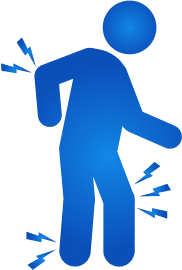People living with hemophilia (PwH) may experience challenges and unseen impacts

For many PwH, the daily impact can be on their mental health, family life, and ability to explore other aspects of their identity.
The burden goes beyond the bleed: PwH may experience physical and emotional burdens before, during, and even after the bleeding episode.
Current challenges may include:
.png)
Emotional
- Emotional burdens
- Impact on education, recreation, and career
- Social isolation

Physical
- Different grades of pain
- Concerns about bleed protection
- Breakthrough bleeds

Logistical
- Access to treatment centers
- Refrigeration requirements
- Difficulties with scheduling treatment
- Reconstitution demands
Limited options for PwH living with inhibitors

Development of inhibitors (a response by the immune system) is a significant issue in the treatment of hemophilia, particularly with factor replacement therapy.
- 20%–30% of people living with severe hemophilia A develop inhibitors
- <5% of people living with hemophilia B develop inhibitors
PwH with inhibitors require significantly more time for treatment, which can be financially and emotionally demanding and hard to maintain. This can make life more challenging than for PwH who are unaffected by inhibitors.
PwH may not realize all the ways that hemophilia could be impacting their daily lives.

What are current and potential approaches to achieving hemostasis in hemophilia?
Each patient story reflects the real-life experiences of individuals diagnosed with hemophilia. Individual experiences may vary. These patients were compensated for their time creating this content.
MAT-US-2307289-v1.0-11/2023
Last Updated: November 2023
.png)
